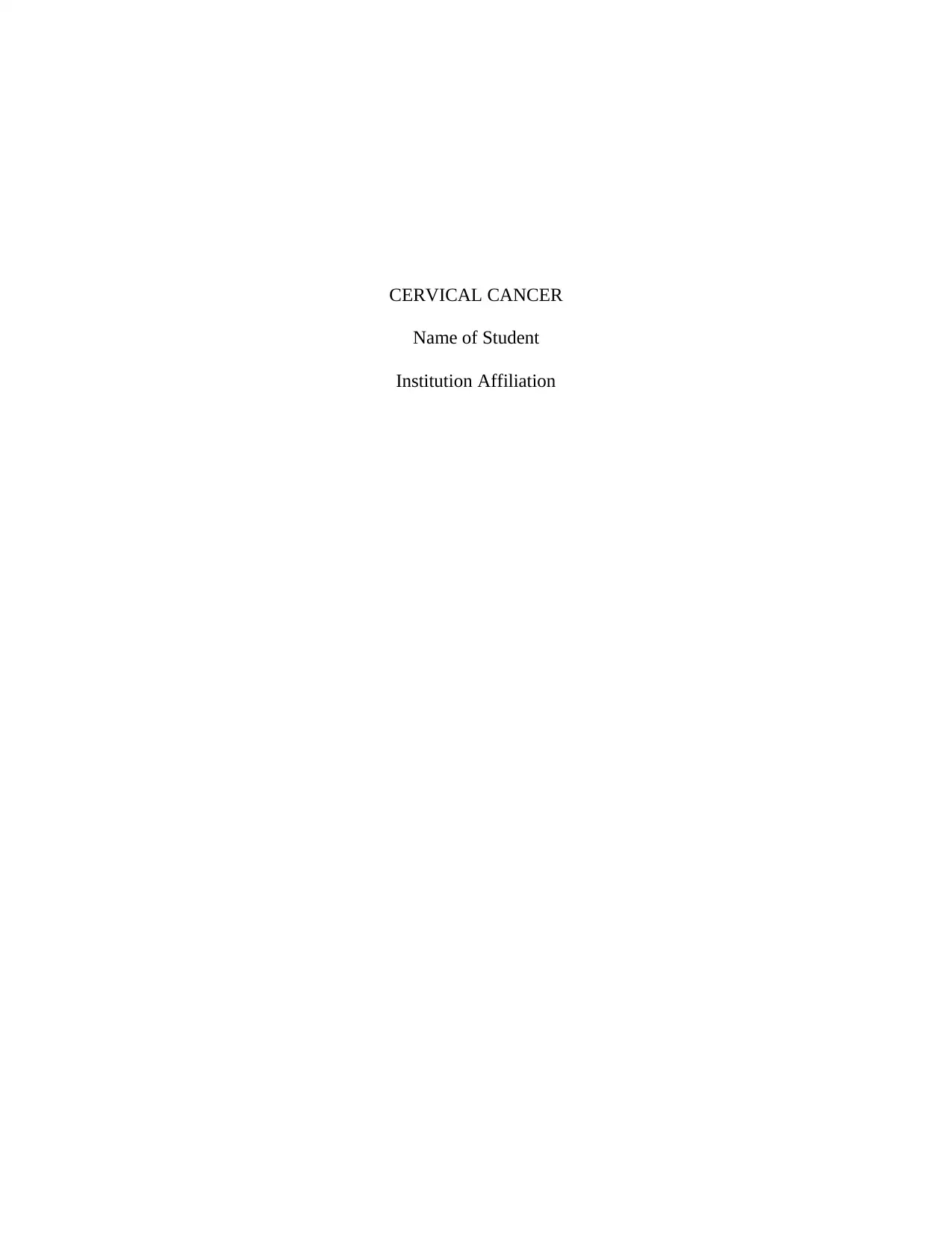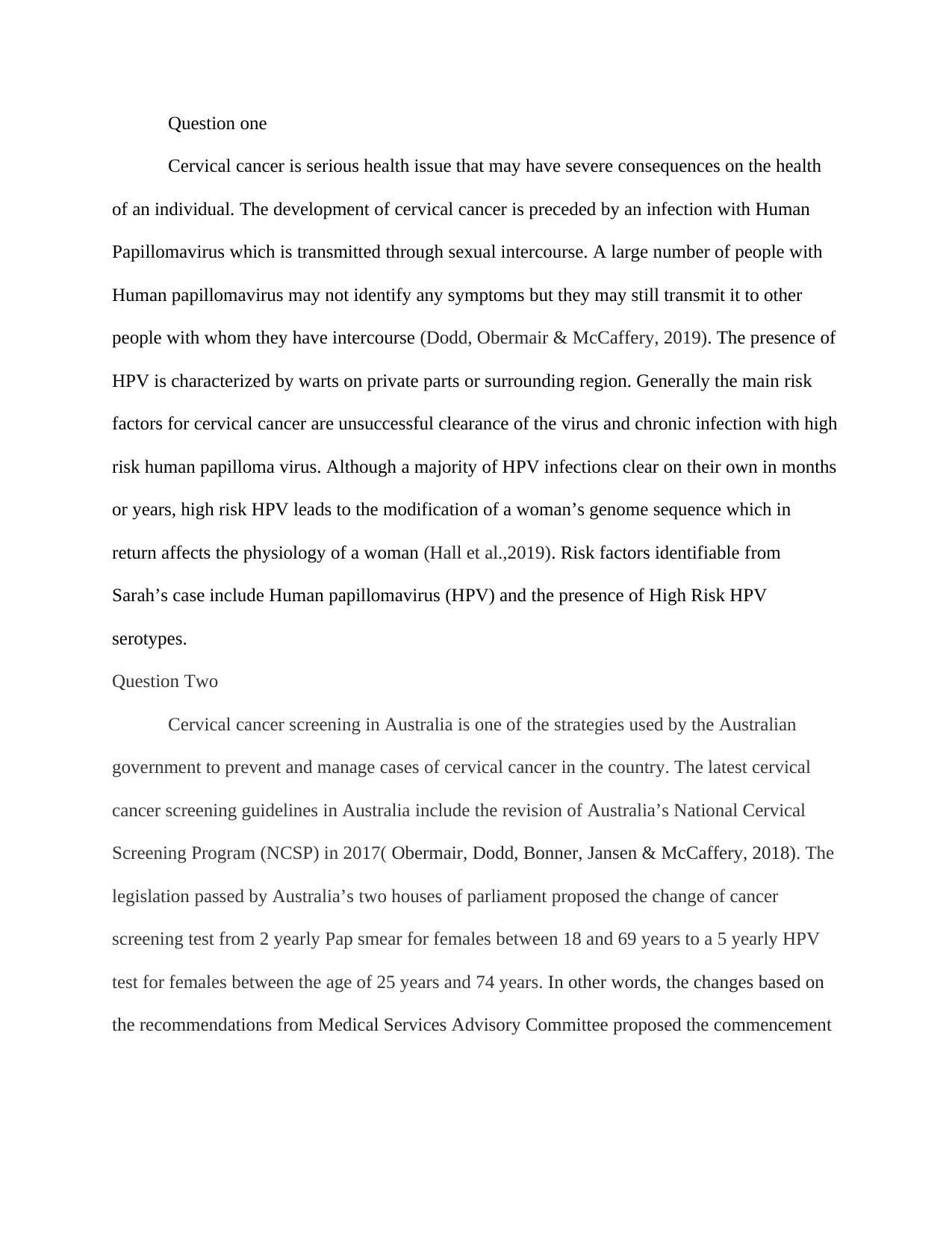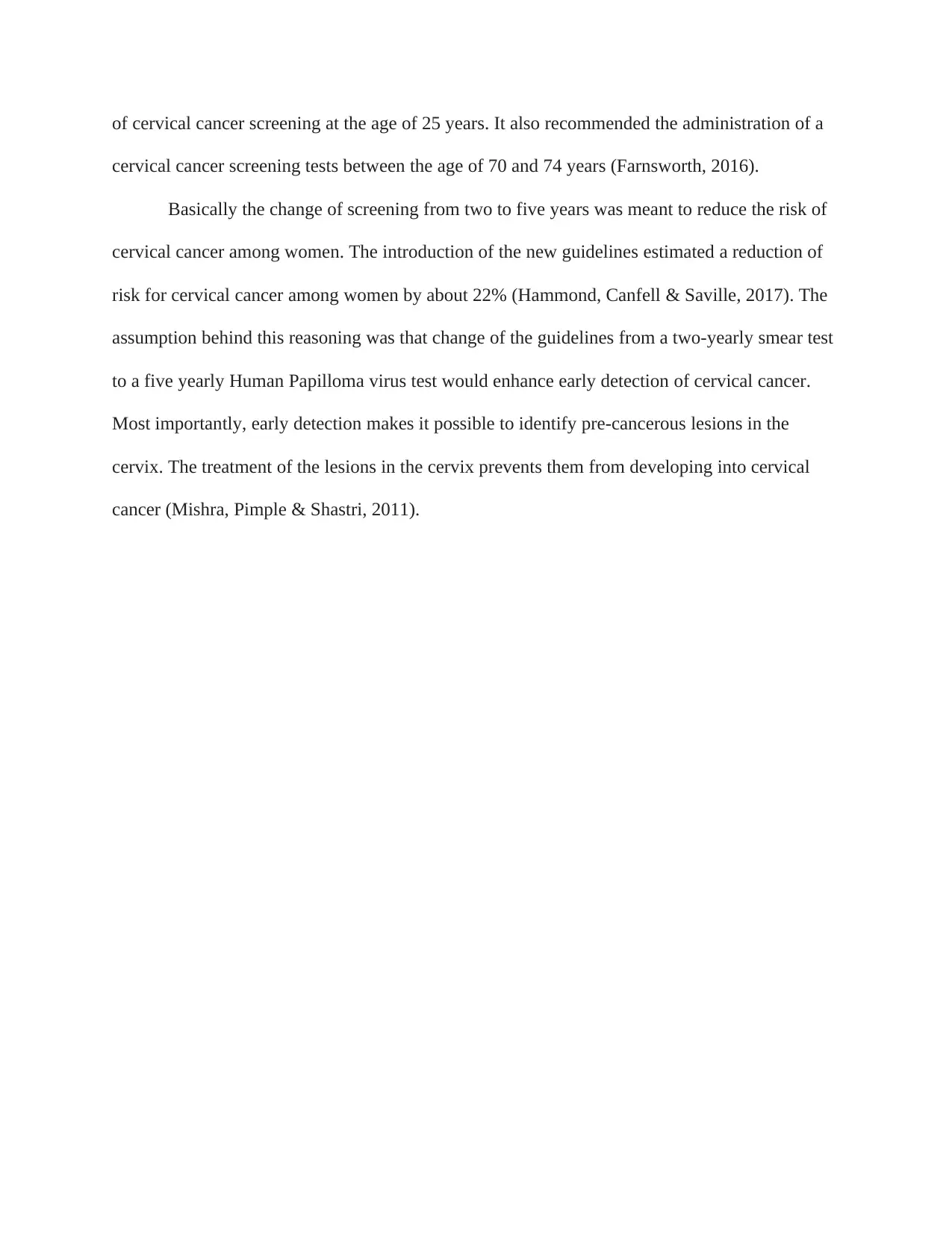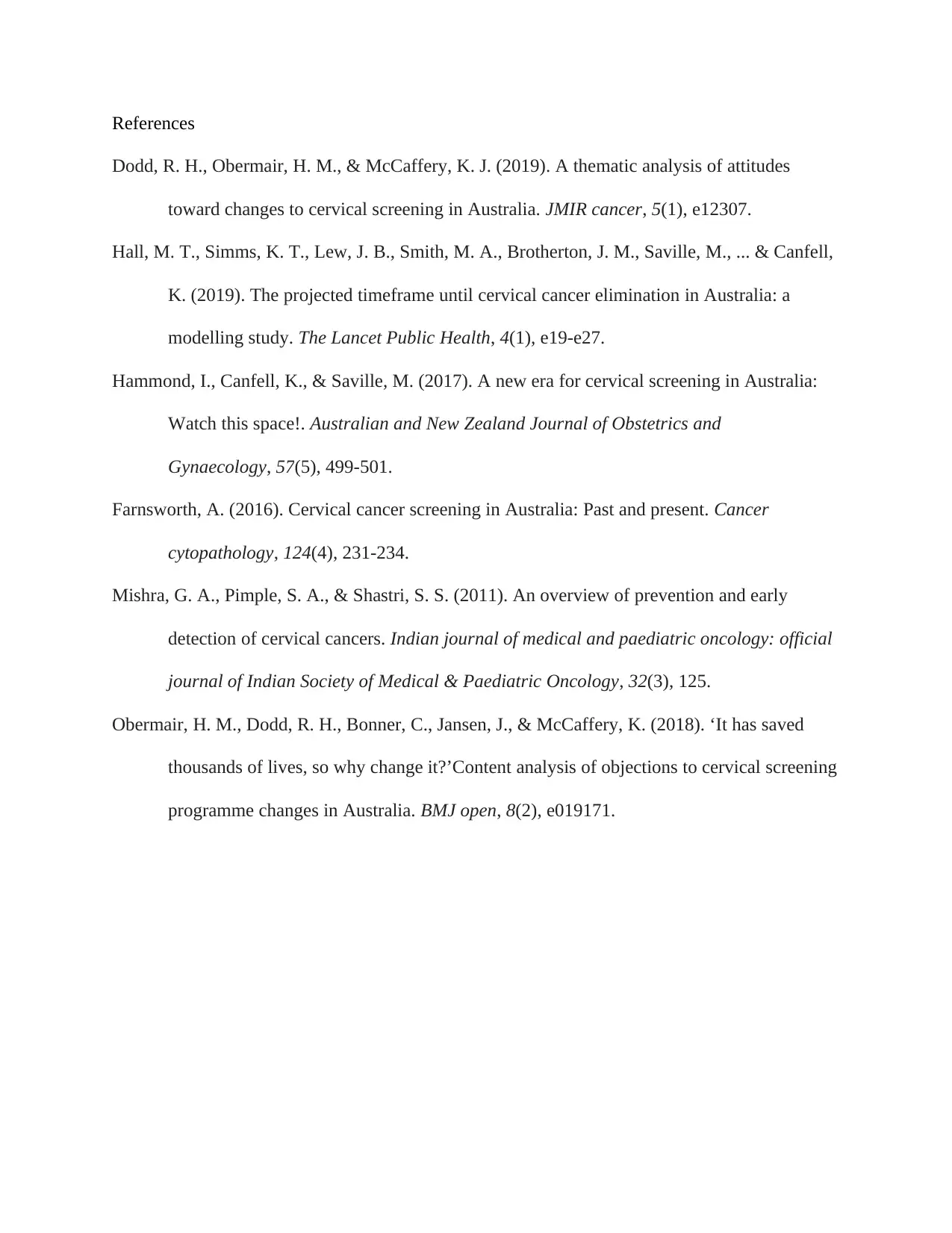Cervical Cancer Analysis: Pathophysiology, Risk Factors, and Screening
VerifiedAdded on 2022/09/10
|6
|804
|15
Homework Assignment
AI Summary
This assignment delves into the complexities of cervical cancer, examining its pathophysiology and identifying key risk factors. The response begins by defining cervical cancer as a serious health issue, highlighting its association with Human Papillomavirus (HPV) infection, and discussing the asymptomatic nature of HPV transmission. It then explores the primary risk factors, including the persistence of high-risk HPV strains, and the resulting genomic modifications. The assignment also addresses cervical cancer screening in Australia, detailing the evolution of the National Cervical Screening Program (NCSP), including changes from a 2-yearly Pap smear to a 5-yearly HPV test. The rationale behind these changes, aimed at early detection and prevention, is discussed, along with the estimated reduction in cancer risk. The assignment concludes by referencing relevant studies and guidelines that support the analysis of cervical cancer, screening, and risk factors.
1 out of 6













![[object Object]](/_next/static/media/star-bottom.7253800d.svg)